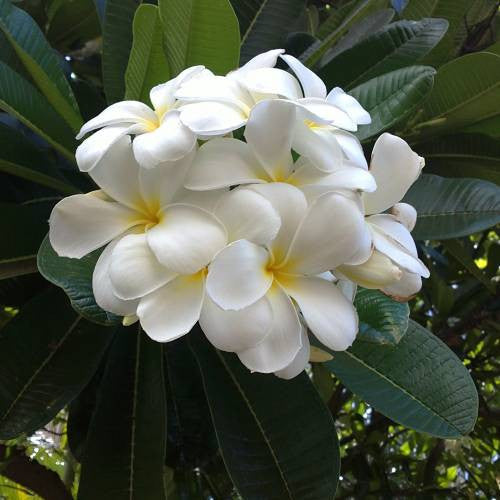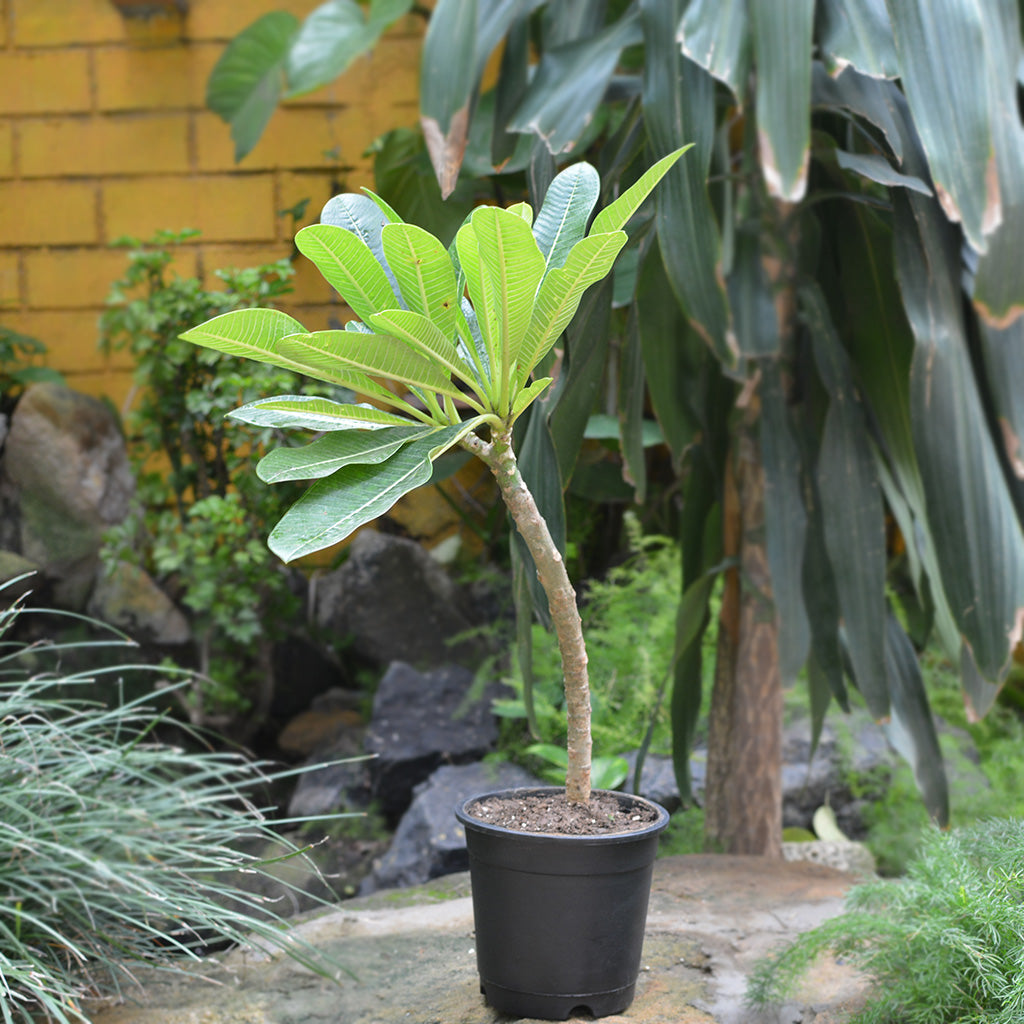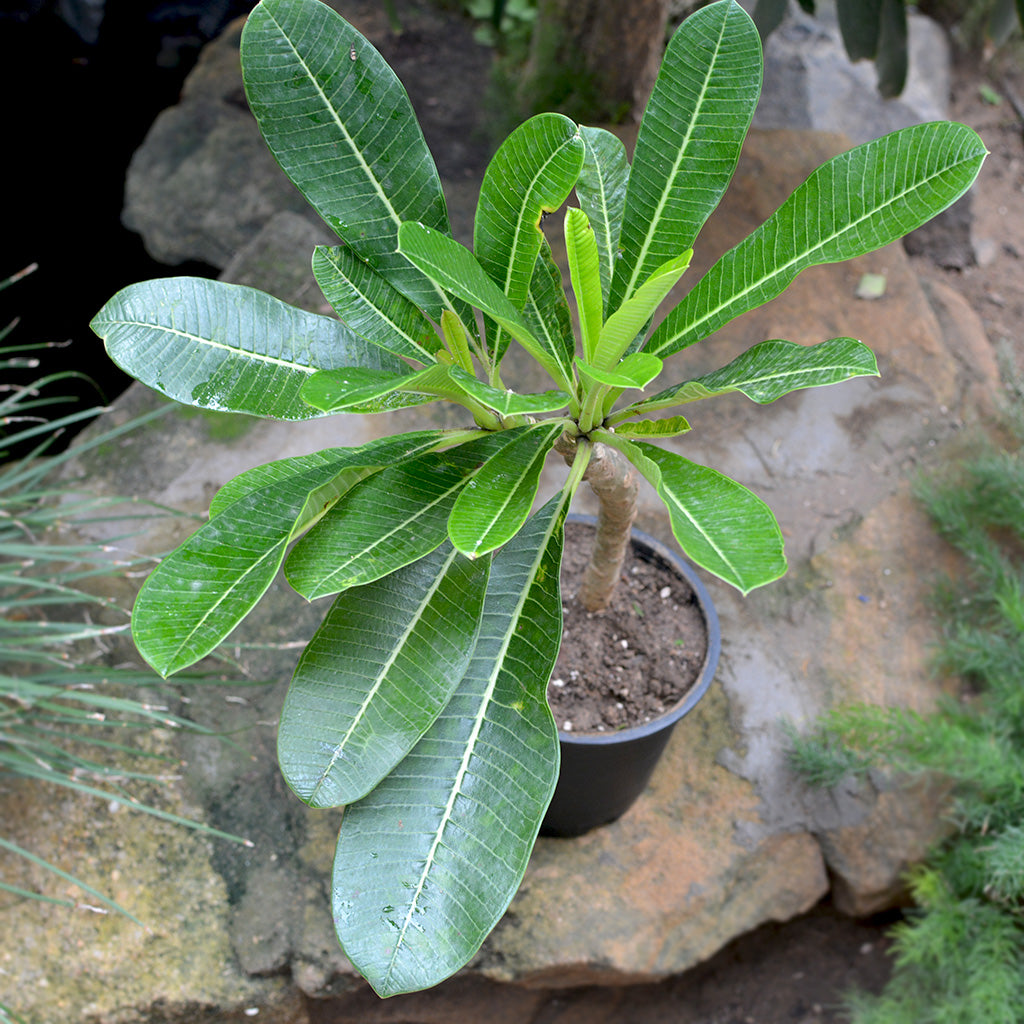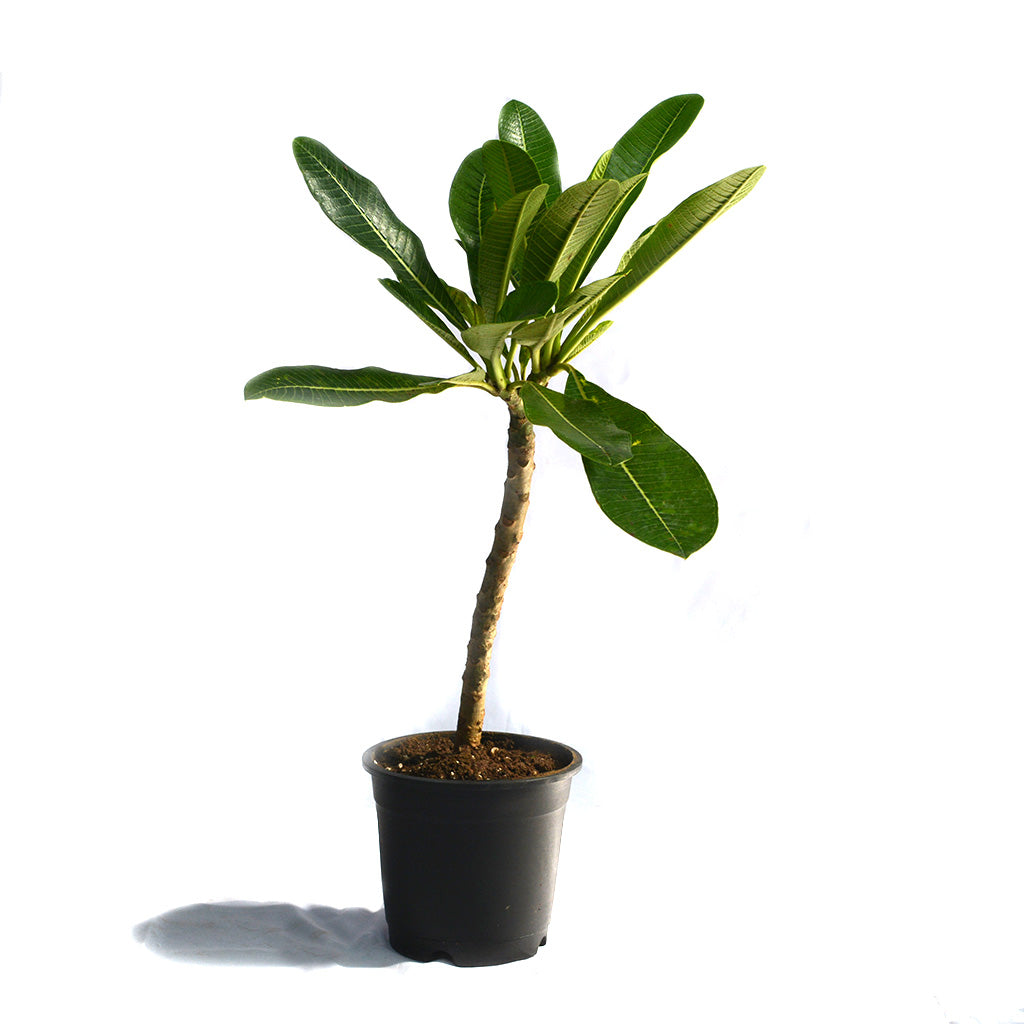West Indian jasmine
Family
Apocynaceae
Origin
Mexico
Description
Plumeria alba, commonly called white frangipani or nosegay, is a small rounded deciduous tree of the dogbane family that grows in a vase-shape to 15-25' tall. It features fragrant white flowers with yellow centers. Upright branches are thick but weak and have a milky sap. Very fragrant 5-petaled flowers (to 3" wide) bloom in terminal clusters at the branch tips during all seasons except winters, which is its dormant period. Flowers are white with yellow centers. Oblong-lanceolate green leaves (to 12" long) are spirally clustered at the stem ends.
Environment
Frangipani needs bright light to full sun for at least 5 hours of direct sun each day.
Keep soil evenly moist during summers. Water sparingly in winter, when a plant is resting. Yellowing leaves are a sign of overwatering.
Moderate humidity is good for the plant. Place the pot on a tray of wet pebbles to raise the humidity around the plant. Misting is also a good idea in summer. With plumeria care should be taken to mist the foliage, not the flowers.
Feed the plant with high-phosphorus fertilizer before summer begins to promote blooming.
Landscape Uses
Plumeria makes a beautiful potted house plant. They grow well in pots, flowering reliably every summer.
Approximate size : 2 - 2.5 feet
























